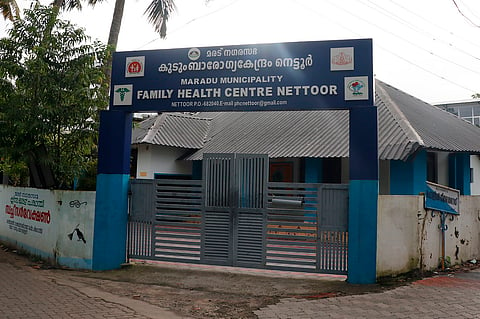

India’s cancer burden is increasing rapidly, and its impact is not limited to just cities, a new study has shown.
The paper, titled Cancer Incidence and Mortality Across 43 Population Based Cancer Registries in India, is based on data from 43 cancer registries across the country.
It shows that several districts in states like Kerala and Assam, where the rural population is more than 50 per cent, have the highest cancer burden among women and men. Varanasi in north India is no exception.
The paper has been published in the journal JAMA Network Open.
Down To Earth (DTE) analysed the data cited in the paper. The average crude incidence rate (CIR) of cancer cases in 30 of the 43 registries, where the rural population is 50 per cent or more, is about 76 per lakh population in males and about 67 per lakh population in females. The analysis is based on overall CIRs reported for each registry (covering both rural and urban populations), not separate rural-only rates.
The average data does not provide an all-India rural population scenario but is based on the average CIR calculation of areas with more than 50 per cent of rural population from among the 43 registries selected.
CIR is the simplest way to know the number of new cancer cases occurring per 1,00,000 population in a particular time period. That is, how much is the burden of cancer in an area.
For instance, if a registry area has a population of 10 lakh (one million) and there are 1,000 new cancer cases in a year, the CIR would be 100 per lakh population.
Data from 43 Population Based Cancer Registries (PBCRs) included in the study show that the situation in rural India is also grim, and in many cases, the burden is equal to or greater than that of urban areas.
The PBCR is part of the National Cancer Registry Programme (NCRP) administered by the Indian Council of Medical Research (ICMR) in India.
PBCRs cover approximately 18 per cent of India’s total population; registries cover a wide range of urban and rural areas across different states, providing a reasonably representative snapshot of the country’s cancer burden.
According to the research, these registries i.e. PBCR Cancer Centres recorded 708,223 new cancer cases and 206,457 deaths. It incorporates data from various states and geographical regions.
“According to this cross-sectional study, a total of 708,223 new cancer cases were reported in 43 cancer registries between 2012 and 2019. About 54 per cent of these patients were women and the average age of the patients was about 56 years. During this period, 206,457 people died of cancer.”
The study pointed out that there is variation in registry coverage. Some areas are entirely urban, while the share of the rural population in some registries is very high.
Among the 43 PBCRs, several regions with more than 50 percent rural population recorded extremely high cancer rates.
In 30 such areas with over 50 per cent rural population, the cancer incidence rates are alarming. In many districts, the CIR per 100,000 population has crossed 100.
In Pulwama, Jammu & Kashmir (85.6 per cent rural), the CIR for men was recorded at 132 and for women at 131. In Pasighat, Arunachal Pradesh (74.6 per cent rural), the CIR was 105 for men and 103 for women per 100,000. In Kasaragod, Kerala (61.1 per cent rural), the rates were 133 for men and 101 for women, while in Kollam (55 per cent rural), men reached 191 and women 166 per 100,000. The most critical situation was in Pathanamthitta (89 per cent rural), where the CIR was 261 for men and 209 for women.
The picture is also worrying in the northeastern states. In Cachar district of Assam (81.8 per cent rural), the CIR was 107 for men and 97 for women. In East Khasi Hills, Meghalaya (55.6 per cent rural), it was 140 for men and 85 for women per 100,000.
In Varanasi, Uttar Pradesh (56.6 per cent rural), the CIR was 62 for men and 52 for women, while in Prayagraj (75 per cent rural), it was 52 for men and 49 for women. Even though the rates here are not as high as in southern and Northeastern districts, given the large population, the challenge is no less significant.
According to the study, the expansion of rural registries through the NCRP network has improved coverage, but it still remains limited. Nevertheless, the available data show that cancer cases in rural India are not only present but, in several places, exist at high levels.
Higher numbers could also be the result of increased screening, reporting, and coverage.